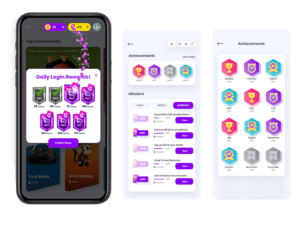THE NEXT BIG THING
Mobile gaming is emerging as the prime pastime for app users. With record numbers of consumers practising social distancing amid COVID-19, many people are using their downtime to discover new games or binge on old favourites. Adjust data on global gaming demonstrates just how significant that has been in the first quarter of 2020, with consumer spending, app engagement and downloads all jumping to record highs.
People across the globe are now spending more time than ever playing games. Perhaps more significantly, people are also engaging with advertising more. It’s a trend that has played to the strengths of hyper casual’s unique monetization model. This report provides insights into how hyper-casual games have fared in the recent past, and what could be in store for the future.

Hyper casual mobile games saw hypergrowth in Q1 2020: Globally, installs more than doubled from December 2019 to March 2020. But users didn’t just download more hyper-casual games; they also played them more often. Adjust data reveals sessions grew by a whopping 72% in March. Unsurprisingly, March was the month when the lockdown went into full force, and also the period that saw sessions in many countries skyrocket. Confined to their homes, users needed no convincing to download and play hyper-casual games.
Attractive CPIs are everywhere: Despite a 35% decrease in costs, acquiring hyper-casual users in the U.S. ($0.42 at the end of March) came in at the high end of the scale. However, marketers can expect the highest conversion rates (17%) from users in this region. During the same period, costs in APAC declined sharply to tie with EMEA at around $0.20. Globally, CPIs are much lower, averaging $0.17 in Q1 2020.
IPMs are off the charts: Globally, total installs per 1,000 impressions increased by 18.2% from Q4 2019 to Q1 2020. This indicates users are more engaged with ads and more likely to take action as a result of viewing them.
Advertising provides a positive impulse: Predictably, sessions for hyper-casual games are short (1.56 per user per day) and stickiness is moderate (11% for hyper-casual mobile games compared to 24% for all other games combined). However, this is the game experience the genre was built to deliver.

Significantly, hyper-casual games can display more ads than gameplay within a minute and still hold the attention of their audience and generate significant revenues. It would seem that it pays for marketers to show more ads. But users have their limits. Data indicates four ads per minute is too much of a good thing. Many games fall below that – missing out on an opportunity to make more money from showing the optimal number of ads to their audiences.
Benchmarks matter: An examination of ARPU distribution shows that hyper-casual games should strive to make at least $0.13 per user. But marketers can also aim higher. The top 25% of hyper-casual games pull in users that generate $0.23, and the top 10% make an impressive $0.30, or more than 2x the money compared to the median.
HYPER CASUAL MOBILE GAMES EXPLODE AND EVOLVE
Globally, mobile gaming is well on track to being a $100 billion market, with some estimates suggesting mobile gaming will generate revenues of $95.4 billion by 2022, accounting for 41% of a total global games market worth $196 billion. 1
The monstrous growth of mobile gaming has been powered by incredibly popular and massively addictive games such as hyper casuals, a game type that has exploded since it broke onto the scene in late 2017. This phenomenally popular genre is made up of lightweight games that are instantly playable and infinitely replayable. The combination of simple game mechanics and minimalistic design ensures a “tap-to-play” experience that is highly engaging.

This dynamic also defines how this unique gaming genre makes money — relying on ad monetization for 95% of its revenues. 2 It also begs the question of whether hyper-casual games are a genre at all. Some argue that hyper-casual games are, in fact, a business model, cleverly blending the best ad experience and the most engaging mechanics to appeal to the broadest category of players. In practice, these simple games allow players to pay for in-game resources, microtransactions and other items with attention. The outcome is a highly engaged player and a valuable user base that accepts and appreciates commercials.
Follow us on:
Facebook: https://www.facebook.com/gogamesapp/
Twitter: @goamagames
Instagram: @goamagames





